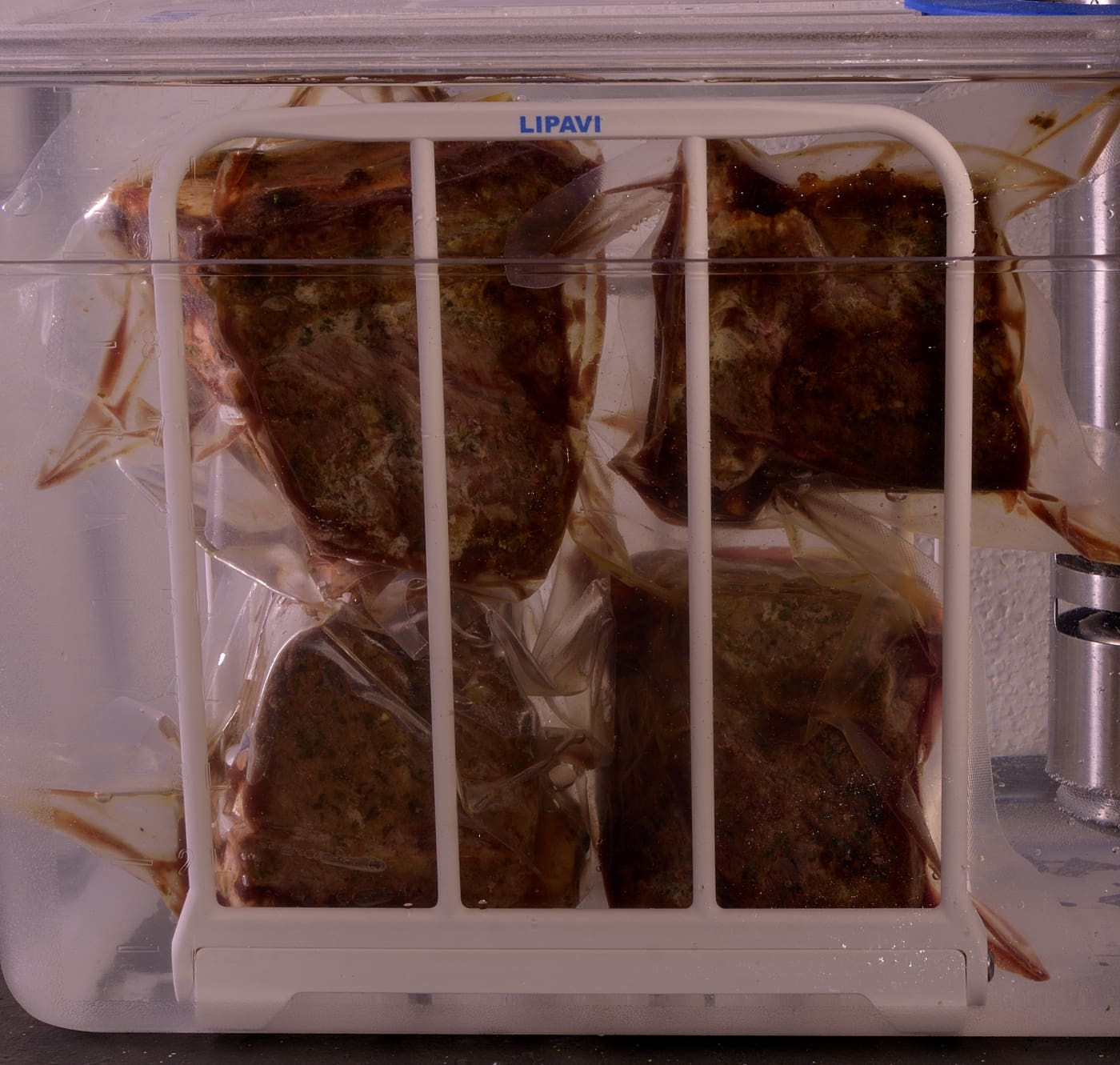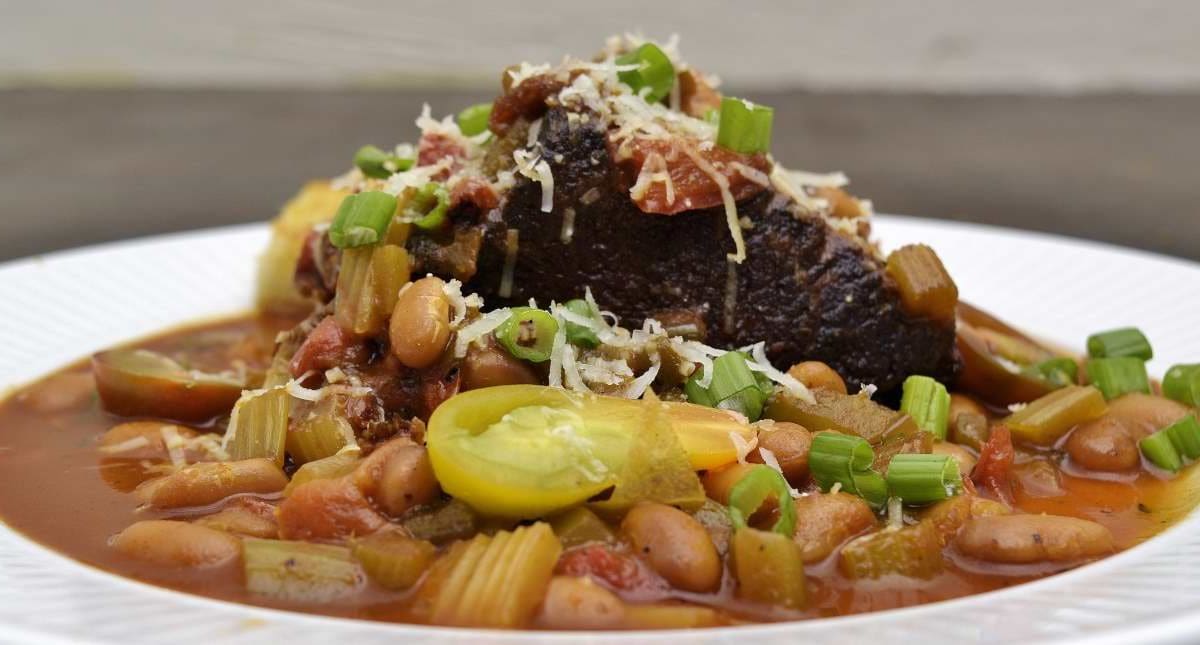
This recipe is an adjunct to Advance Seared Short Ribs
Serves 4
Level of difficulty 3.25
Sous vide legumes?
The good news is that sous vide processed dried beans are really great. There is absolutely no breakage because there is no friction in the bag. There is no need to stir, and there is no pan for them to stick to the bottom of. That’s the good news.
The bad news is that sous vide processing dried beans of any kind takes a long, long time. I do not insist that the beans must be cooked via sous vide. The beans can be cooked in a pot according to the directions on the packaging. The beans are available in cans already cooked, and there is no shame in that. I do it myself sometimes–however you cook them, drain them and save 1 cup of the liquid to go in the ragu.
If you still want to try your hand at using sous vide to process dried legumes, here is how I do it:
Procedure:

183 F/84 C.
Put 1/2 cup of dry Cannelini beans in a Ziploc gallon freezer bag. Set the bag of beans on top of the water in the sous vide bath and slowly pour 2 cups of water into the bag. It will sink. Drape the bag’s opening over the edge of the container and secure it with the lid. Process for at least 6 hours. You can extend this process for as long as is convenient for you without overcooking the beans–even overnight, if you wish. The beans will not overcook because of the unique characteristics of sous vide.
As I mentioned, you should test the beans for tenderness. Do not hesitate to actually cook them in a pot for a half an hour to achieve the final texture most desirable to you. When you are satisfied that they are done, drain the liquid and save 1 cup for the ragu. If you prefer, you can shock the beans in iced water to 70 F/21 C and then refrigerate them. I usually just leave them in the bath until I am ready to proceed.
“Roasting” the peppers
Roasting is a misnomer. If you have never roasted peppers before, or you always hated it, click HERE for a detailed tutorial. If you are confident in your skills and method, roast and peel the green and red bell pepper and proceed.
Make the Ragu
Make sure the bath is still set at
183 F/84 C.
Submerge the packages of short ribs in the sous vide bath for two minutes. This will fully melt the gel. Cut open the bags, remove the short ribs and pat dry. Because of the advance searing procedure, there will be very little juice in the bag.
Chop the peppers and the celery into “bean sized” pieces. Use a Ziploc gallon freezer bag to combine the short ribs, peppers, celery, beans with one cup of the cooking liquid, the tomato paste, garlic, and oregano. Add the salt and pepper to the bag and then lower it into the bath. It will slowly sink. Drape the opening over the edge of the sous vide container and secure with the lid. Remember to taste for accuracy later. Process sous vide for at least 2 hours at
183 F/84 C

The high temperature will give you a more “braised” result, which is how this dish comes out when prepared by traditional methods. The meat will be very tender, and you should take care that the short ribs don’t fall apart when you stage the bag into the serving dish.
Finishing the Ragu
Slice the green onions as thin as possible. Cut the cherry tomatoes in half.
Stage the ragu into a large bowl. Taste for salt. ALWAYS taste for salt. Add the cold butter and stir while it melts in the beans. Remove the short ribs to bowls and carefully ladle the ragu over them. Decorate with the green onions and cherry tomatoes. Grate a little Pecorino Romano on top.

Norm King

Wow, marvelous blog format! How long have you ever been running a blog
for? you make running a blog glance easy. The whole glance
of your web site is great, as smartly as the content!
You can see similar here sklep internetowy